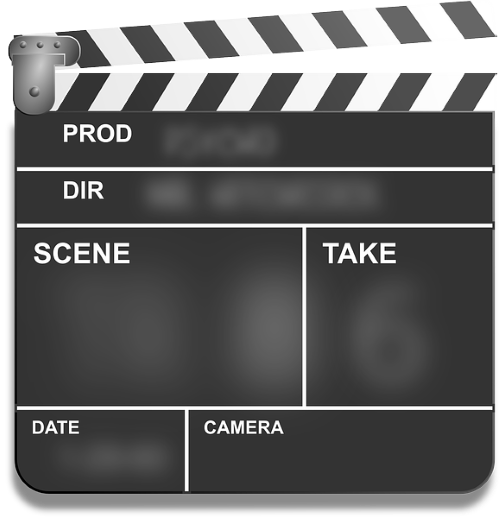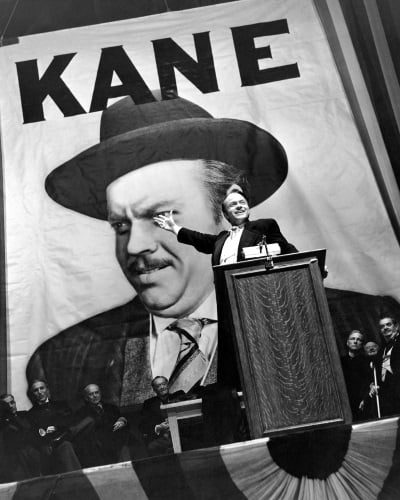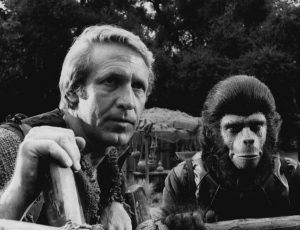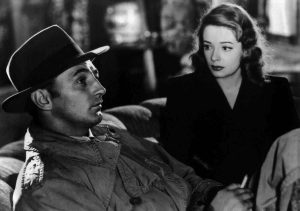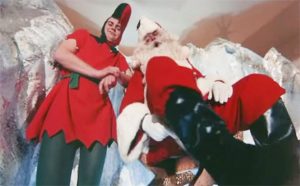Face it. Every time we watch a movie, we turn into movie critics. Lots of times, though, our critiques aren’t that involved. They’re limited to things like “That sucked!” or “That movie was awesome!” or “I love him. He’s hot!”
This not-so-detailed analysis is fine if you’re critiquing a movie with your friends, but it isn’t going to cut it when you have to write a film analysis. (In fact, it’s better left on the proverbial cutting room floor.)
But if you can’t write about how much the movie sucked or how hot the actors are, what’s left to include in the paper?
Believe me, there are lots of things to include. I can’t possibly discuss them all in this post, but here are 10 cinematic techniques you need to know for a better essay.
10 Cinematic Techniques You Need to Know for a Better Essay
The purpose of this post is to describe 10 cinematic techniques you might use as part of film analysis essay.
This post isn’t designed to teach you how to write a film analysis. If you’re looking for help with that, read How to Analyze a Movie for Dramatic Effect.
Let’s dive into those techniques now.
Cinematic technique #1: Genre
Genre refers to a type of film (or piece of literature) that follows a specific style and usually focuses on a specific subject. A few examples of genres are western, romantic comedy (a.k.a. chick flick), sci-fi, and documentary.
Genres can sometimes become formulaic, so if you’ve seen one, you’ve seen them all. Think of every romantic comedy in existence. They’re all basically light-hearted comedies, and the characters have to overcome a number of obstacles in order to find their true love.
Cinematic technique #2: Literary terms
Okay, so “literary terms” isn’t technically a technique exclusive to film, but in many literature classes you’re asked to analyze films. If you’re asked to critique a film as a piece of literature, you better believe your prof is going to want to see a detailed discussion of literary devices.
Think about movies like Lord of the Rings and the Christian symbolism involved. Think about the classic film Citizen Kane and the sled as a symbol of Kane’s childhood.
How about theme? The Disney movie Cinderella exemplifies the theme of love conquers all.
And Luke interacting with Darth Vader in Star Wars? This is clearly a great example of foreshadowing (even though we may have not realized it until much later in the movie).
Check out these posts if you’re in need of a little help with the literary analysis part:
- 8 Components of a Smart Literary Analysis
- How to Write a Literary Analysis That Works
- Literary Analysis Tips from a Kibin Editor
Cinematic technique #3: Music (or musical score)
Don’t tell me you’ve never caught yourself singing one of those catchy Disney tunes. Like it or not, those songs are earworms.
The fact that you can’t get a song out of your head is evidence of the importance of music in a movie.
Music, though, isn’t just used for catchy Disney flicks. Think about the scary music that plays in every horror movie or the high-energy music that plays in every car chase.
The music is chosen for a reason, so pay close attention to it as you critique a movie.
Cinematic technique #4: Point of view
Point of view is essentially the viewpoint through which a story is told. This is another term borrowed from literature, but I’ve included it as a separate term here because the chosen point of view alters the entire movie.
Take, for example, the Planet of the Apes movies. Since 1968 we’ve been watching the series about a group of astronauts who realize that Earth is now run by apes.
Now think about how the story would change if told from different viewpoints.
If told from the point of view of the astronauts, the movie becomes a horror movie, with humans no longer in control, being forced to live as slaves. If told from the point of view of the apes, it becomes the story of the uprising of a few trouble-making humans who are trying to overtake society as they know it. Completely different movies, right?
Cinematic technique #5: Shots
Shot simply refers to a series of frames that establishes the scene, emotion, and story in a movie.
If you’ve ever watched a western, for example, you’ve seen long, expansive shots that seem to encompass the entire desert, with one lone cowboy riding into the sunset.
A movie might also use close-up shots. As the name implies, these shots zoom in to a character, generally only showing the character’s face. You’ve seen lots of these shots in serious, dramatic movies when characters have important information to disclose.
Cinematic technique #6: Lighting
Lighting might not be one of the first things you think about when you think film analysis, but it plays an important part in the overall composition of shots and the movie itself.
A comedy, for instance, would be more likely to be brightly lit, while a horror movie may include dark, dreary, and generally scary lighting.
Low-key lighting is also very common in specific types of movies, such as film noir. This type of low lighting creates dark, moody scenes and strong shadows on actors’ faces.
Check out the scene below from the film Out of the Past. Notice the dark coloring and shadows on the actors. Also notice how your eye is drawn to the brightest, lightest point in the shot, the beautiful face of Kathy Moffatt (played by Jane Greer).
Cinematic technique #7: Camera angles
Camera angles might include eye-level shots, aerial shots, or high or low shots.
Eye-level shots are common as they generally put the viewer at the same level as the characters.
Aerial shots can be used to show a large, expansive scene (like the western with the cowboy riding into the sunset).
High camera angles allow the viewer to see the character from a vantage point that is higher than eye level. In other words, you’re looking down on another character. This type of shot is often used to illustrate superiority or power of one character over another. (The person looking down has the power.)
Low camera angles, on the other hand, allow the viewer to see the characters from a vantage point lower than eye level. The character looking up at another character is the less dominant character.
Remember the scene in A Christmas Story where Ralphie is looking up at Santa and telling him he wants a Red Ryder BB gun? This is an amazing example of a low shot. Ralphie is powerless at that moment as he looks up at Santa, and Santa shoves Ralphie down the slide.
Cinematic technique #8: Sound
Sound doesn’t necessarily refer to the dialogue or music in a movie. Instead, it refers to all of the other sounds you hear in the film. These might be background sounds, such as sounds of a room or the noise of a city.
The sounds might also be amplified to create an effect. Ever watch a horror movie where you could suddenly hear every footstep, every creaking floorboard, and even the faintest sound of a wolf howling in the background?
Those sounds are there for a reason. Take note of them, and consider what effect they have on the viewer.
Cinematic technique #9: Special effects or computer-generated imagery (CGI)
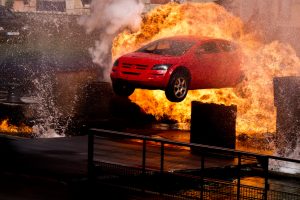
Moviegoers love a good car chase ending in a fiery explosion. This type of special effect is, of course, common in many movies. While older movies had no choice but to actually blow up cars if they wanted to create such a scene, modern filmmakers can use CGI to virtually create an explosion.
Special effects aren’t all about explosions, though. Special effects might refer to the makeup worn by actors, to the tornado created on the set, or to digitally placing characters in different scenes.
Some people now argue that movies are overwhelmed with CGI (such as superhero movies like Batman or X-Men). Your analysis might include a discussion of the effectiveness of special effects, whether the effects are realistic, or whether the movie contains too many effects.
Cinematic technique #10: Mise-en-scène
This is a big one, so I’ve saved it for last. Mise-en-scène refers to the arrangement of everything you see in the shot. This includes the actors, costumes, set/background, lighting, props, and camera work and angles.
Essentially, mise-en-scène is the world in which the characters live and is the result of everything coming together to form the movie’s overall feel and look.
If you’re analyzing a film, you might use mise-en-scène to help describe the mood, the goals, or the themes of the film.
Roll the Credits
As the film credits roll and as you wrap up your thoughts about your film analysis essay, don’t forget to think about the actors. Mega-celebrities bring a certain amount of star-power to a film. Cameos bring a certain amount of realism to a film. Thus, consider why specific actors are cast and how these people influence the movie.
Looking for a few film analysis examples to use as inspiration? Check out these essays:
- A Film Analysis of Citizen Kane
- An Analysis of the Film The Graduate
- The Powerful Cinematic Tools Used in the Movie Interstellar by Christopher Nolan
To make sure you get the credit (and grade) you deserve on your film analysis essay, let a Kibin editor review your paper.
And as Roger Ebert used to say, “I’ll see you at the movies.”
